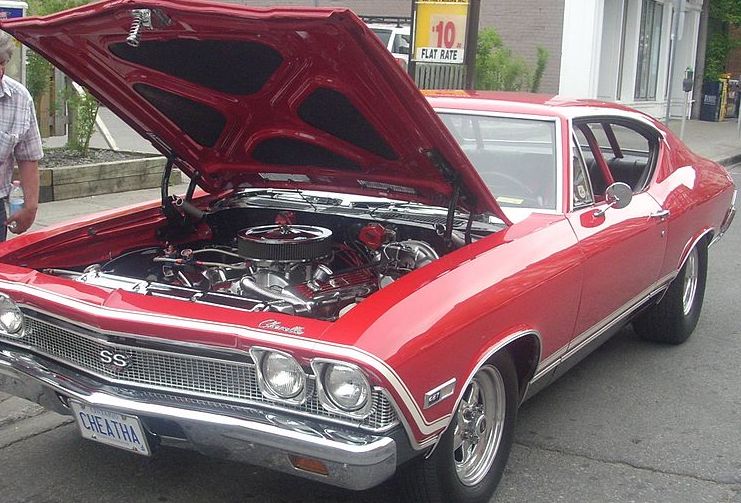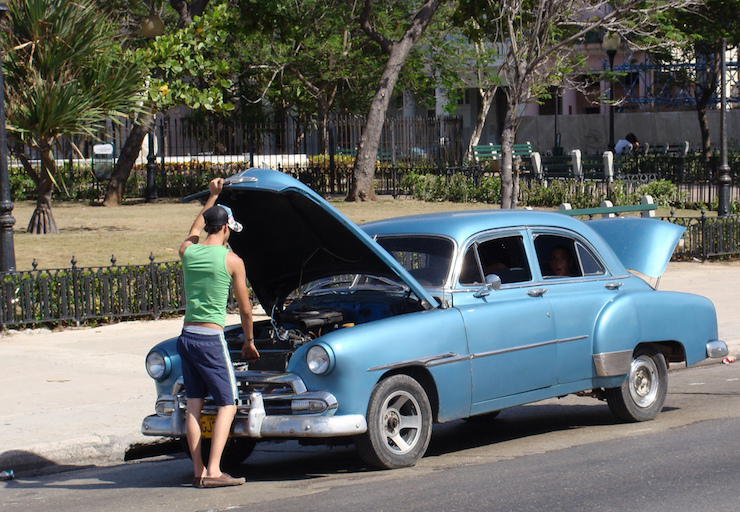How to Install an Electric Fuel Pump in Your Classic Chevy
If you look at an older car with a carbureted engine, you’d most likely find a mechanical fuel pump. Controlled and operated by manual means, mechanical fuel pumps were phased out in favor of electric fuel pumps. This is because electric fuel pumps do a better job delivering precise, high-pressure flow rates that offer max horsepower to the engine and meet the stricter emission requirements.
Not only that but electric fuel pumps are smaller (which means less engine bay clutter) and easier to work on.
If the mechanical fuel pump in your classic Chevy is either about to give out or not giving enough power to the engine, upgrading to an electric fuel pump is the way to go.

Photo credit: Bull-Doser
Upgrade Options
The first step is deciding what you want to do with the mechanical pump. You have two options:
1. Leave the mechanical pump in place and put an electric one by the tank: You can do this if you want to keep your mechanical fuel pump as a backup in case your electric fuel pump gives out. This is arguably unnecessary because electric fuel pumps are designed to last a long time.
2. Remove the mechanical pump and replace it with an electric pump: If you’re looking for a simpler solution, this is it. Going this route means upgrading your entire fuel pump system in one go, and you could take advantage of the opportunity to repair or replace some components as you go along.
Here’s a basic overview of the removal and replacement process:
- Uninstall the mechanical fuel pump
- Cover the hole with a block-off plate gasket and sealer
- Mount the electric fuel pump near the gas tank and connect it to the fuel line
- Install a filter next to the electric fuel pump
- Wire the electric fuel pump to the ignition switch
Here’s a detailed tutorial on installing an electric fuel pump (complete with a diagram!)
Parts You’ll Need
- An electric fuel pump that will fit your year, make, and model
- All the wires to hook it up to your car (or a universal wiring kit if you want to re-wire the entire car while you’re at it)
- A block-off plate gasket and sealer
- A mount for the electric fuel pump
Mistakes to Avoid While Installing Your Electric Fuel Pump

A situation you want to avoid at all costs, via Rui Fernandes
Electric fuel pumps are reliable. Heck, every new car has one! They do go out, though, but it’s usually the result of a botched installation. Avoid the following mistakes that kill electric fuel pumps and you should be OK:
- Keeping the electric pump far away from the gas tank: Electric fuel pumps don’t pull fuel as well as they push it. So, you want to install it close to the gas tank for optimal performance.
- Mounting the fuel line close to heat sources: Fuel and heat don’t mix (at least outside of the engine). Keep the pump and fuel line away from the exhaust and other heated areas.
- Mounting the electric pump in an enclosed area: Not only do you need to keep the fuel line away from heat sources, but you also have to keep the electric fuel pump out of enclosed areas, such as the trunk or interior of your car. It’s to keep pressure off the fuel lines and to reduce the risk of a fuel leak or fire. Also, your insurance company won’t cover any damages caused by a leak or fire if your fuel pump is in an enclosed space.
- Mounting the electric pump in a high area: The higher you mount the pump, the harder it will work to siphon fuel into the system. That will shorten the pump’s lifespan and it’ll under-deliver fuel to the engine. You want to keep it in a low place, perhaps under the tank.
- Not having an automatic shut off system in place: You want your engine to automatically shut off in case the electric fuel pump system breaks or starts leaking gas everywhere. The last thing you need is raw fuel spraying all over the hot components in your car, especially during a car accident. Consider installing an oil pressure switch (that will switch off the pump if the oil pressure in the engine gets low enough) or another automatic shut off system.
Have you done this swap? Tell us about it on Facebook!